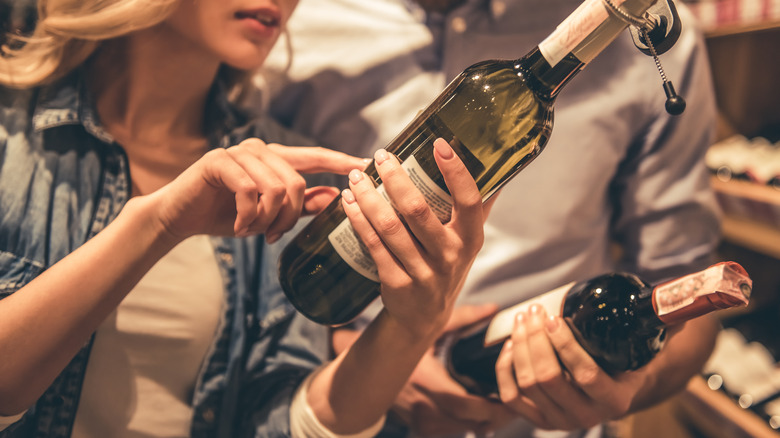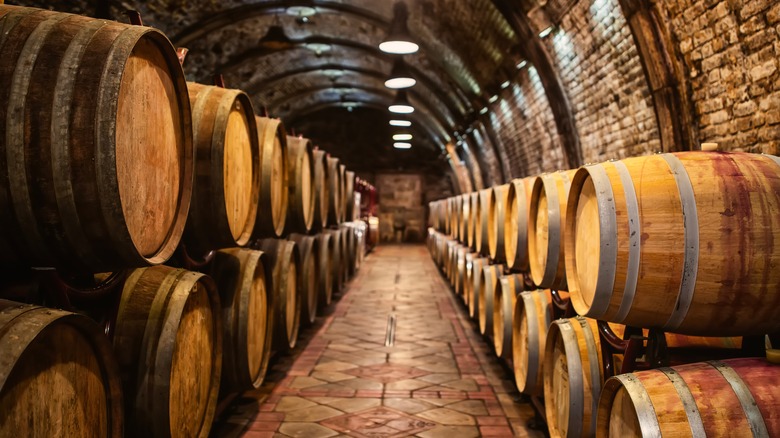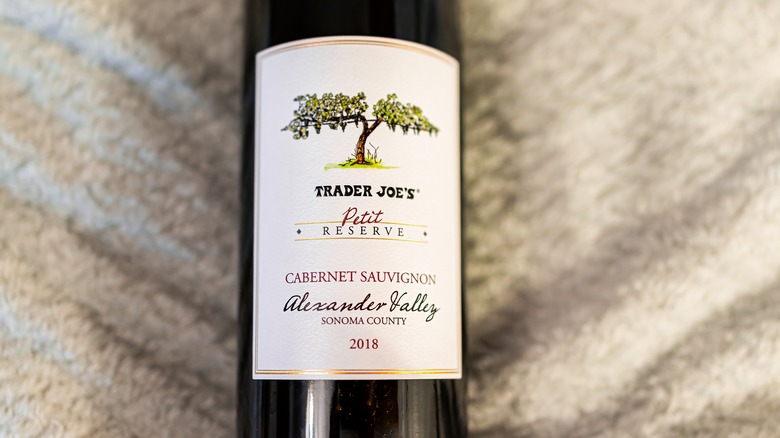Are 'Reserve' Wine Bottles Really Any Better?
One can find wine bottles with the term "reserve" on the label in virtually any wine-producing nation. However, what "reserve" actually means can vary widely depending on the country or region. In Europe, "reserve" on a wine label generally guarantees longer aging and higher quality, and often means certain specified grapes were used as well. That's because traditional "Old World" winemaking nations like France, Italy, Spain, and Portugal have regulations regarding the use of this term.
In the wine world's "New World" — a catchall designation for countries as diverse as the U.S., Australia, Argentina, and China — such regulations often don't exist at all. Even when they do, they're typically not as strict as those in Europe. In the U.S., for example, there are no labeling requirements for reserve wines. The term may refer to wines with longer aging periods, wines that come from a specific part of an estate, or to something else entirely. Sometimes "reserve" is merely used as part of a brand name.
Because the regulations governing the "reserve" label vary so widely, you'll need to research to ensure that bottles bearing this title are actually the best offered by individual wine producers. This can make buying quality wines at a good value more difficult, as reserve bottles, much like estate-bottled wines, tend to be more expensive.
Some reserve wines adhere to regionally specific guidelines
In Old World winemaking countries, the word "reserve" on labels tends to be well-regulated, with regionally specific guidelines. In Italy, for instance, Brunello di Montalcino wines bearing a Riserva label must be made with Sangiovese grapes, and aged for a minimum of six years, at least two of which are spent in oak barrels. It's a stricter requirement than for normal wines of this appellation.
In Rioja, a premier winemaking region of Spain, the classification system is directly tied to aging, with the best wines labeled Gran Reserva, meaning five years of wine aging are required, two of which at a minimum must be spent in oak barrels. The Reserva category, meanwhile, requires three years of aging, including at least one in oak.
The "reserve" label in Europe doesn't necessarily mean a better quality of grapes was used, although that's often the case. These aging guidelines are, however, meant to ensure a consistently higher quality for reserve wines. In other words, these are wines that are made to last. But because of the higher costs associated with producing this style of wine — such as barrels, storage space, and the like — bottles typically bear higher price tags.
New World reserve wines are more unpredictable
Out of the New World wine countries, Argentina is the only one with any real regulations governing the "reserve" label designation, featuring aging guidelines that are similar, although not quite as stringent, as those in Spain.
In the U.S., reserve labels can mean almost anything, as there are no guidelines or labeling requirements regarding the term "reserve." However, the use of this descriptor on labels is generally meant to connote wines of higher quality. The problem, of course, lies in trying to figure out how this quality is defined, since individual winemakers exhibit a range of different definitions. This variability makes shopping for wine tougher, as it's harder for consumers to determine whether the wines are actually better, and also whether they're worth buying at higher price points.
At present, according to the U.S. Department of the Treasury's Alcohol and Tobacco Tax and Trade Bureau (TTB), only certain information (like brand name and type of wine) is required to be included on wine labels. A definition of the term "reserve" was considered by the TTB back in 2010, but no new regulations resulted from these discussions.



